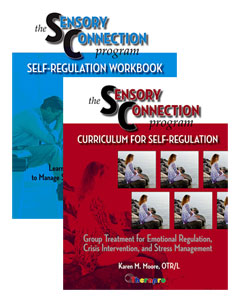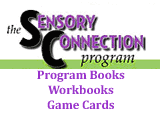Overview
The Sensory Connection Program is an occupational therapy based program using individual treatment, group treatment, sensory diets and sensory sensitive environments including sensory rooms. It is a person-centered, strength oriented, skill building model of care. Sensory strategies initially focus on essential underlying building blocks of self-awareness and self-acceptance. They then help a person move from self-awareness to self-regulation and on to self-care and eventually to self-healing.
The SCP helps with:
- Emotional self-regulation
- Relaxation and stress reduction
- Cognition
- Symptoms of mental illness
- Sensory Defensiveness
- Restraint and Seclusion Reduction
- Trauma Informed Care
Applicable Treatment Settings
- Acute and long term mental health units
- Outpatient mental health treatment programs
- Substance abuse programs
- Programs for patients with head injuries or neurological problems
- Adolescent and Behavioral Units
- Geriatric settings
- Programs for adults with Developmental Disabilities
- Programs for Veterans
The Sensory Connection Program
Developed by Karen M. Moore, OTR/L, features three books:
- The Sensory Connection Program:
Activities for Mental Health Treatment (Manual and Handbook) - The Sensory Connection Program Self-Regulation Workbook
- The Sensory Connection Program Curriculum for Self-Regulation:
Group Treatment for Emotional Regulation, Crisis Intervention, and Stress Management
Compare the three publications [302 KB PDF] to see which one is most applicable to your setting and client population.
Clinical Treatment Stories
The Manual for the Sensory Connection Program contains many stories that demonstrate the effectiveness of sensory activities. View a few sample stories here....
